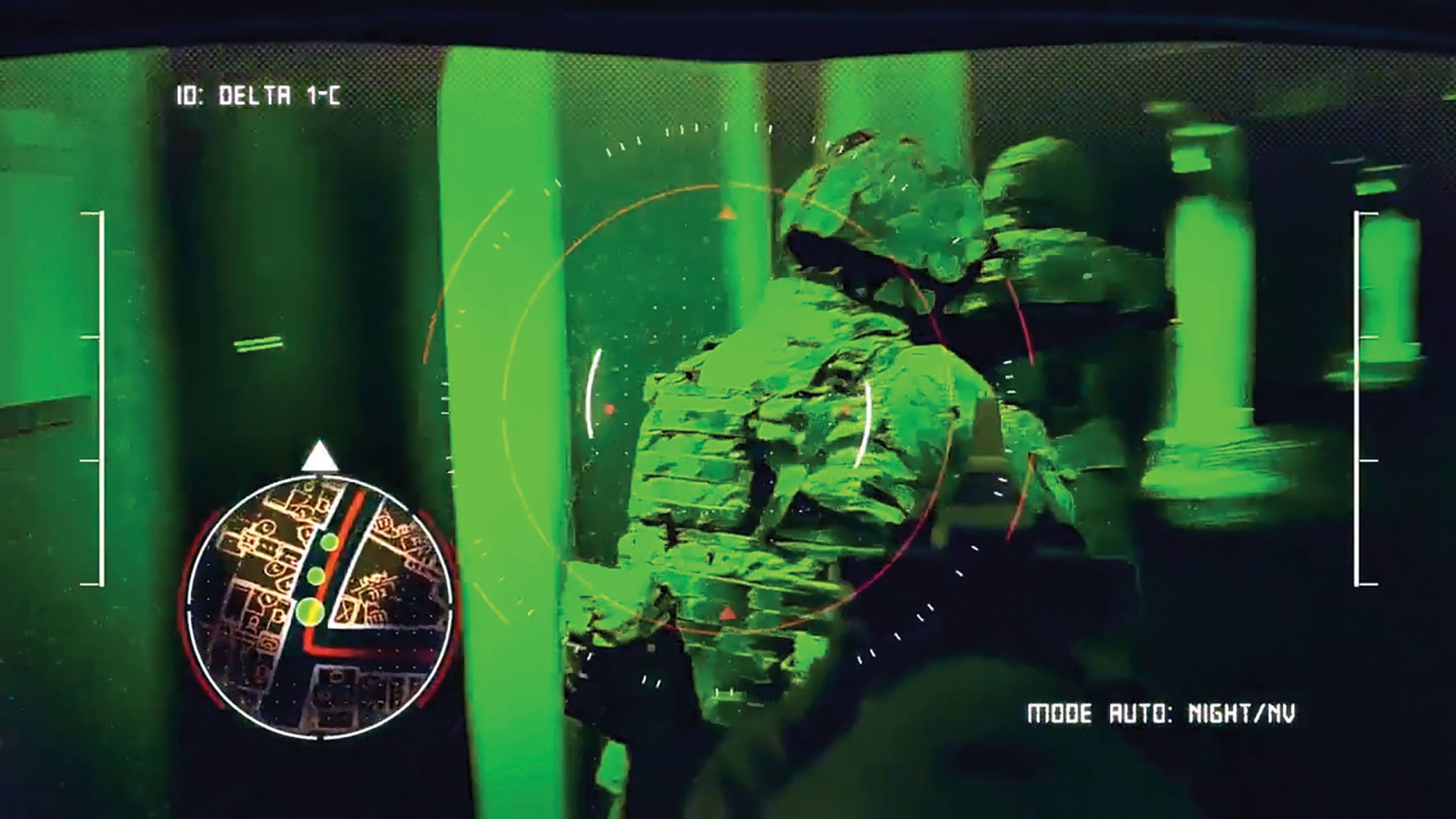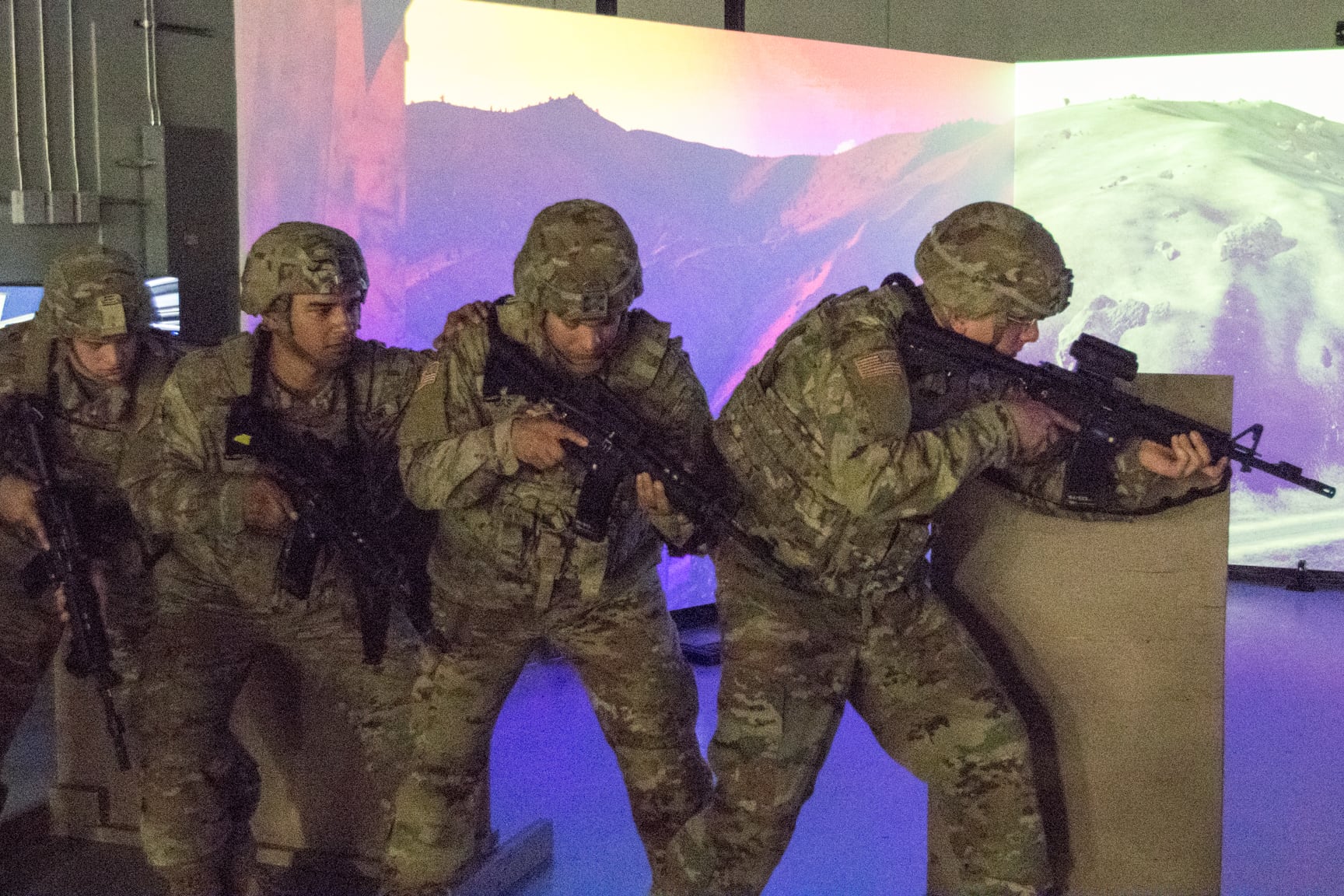As the Army pushes its top priorities for modernization through a collection of cross functional teams, a lot of the headline-grabbing items include longer range fires, missile defense, new helicopters, new vehicles and new rifles.
But for soldiers to use that gear best and practice round after round, they’ve got to be able to train.
And training now means more than mock squad grass drills behind the barracks. Technology is finally getting to a point where soldiers can enter a simulated world and run through combat-like scenarios on the actual terrain where they will fight, whether that’s boots on dirt, flying in the skies or firing from remote platforms.
RELATED

To make that happen, the Synthetic Training Environment CFT commander, Maj. Gen. Maria Gervais, has already pushed out advanced trainers and has more on the way, including the backbone of how a multitude of soldiers, commanders and units will conduct realistic training at home station to help them prepare in ways they never before could.
An “early win” that the team pushed to the force with the help of key funding was to deliver the squad advanced marksmanship trainer this past year, which went first to the 10th Mountain Division in March and was quickly added to One Station Unit Training at Fort Benning, Georgia and pushed to the Security Force Assistance Brigades as they built their ranks pre-deployment.
Most of those SAM-Ts have since been fielded to Camp Shelby, Mississippi; Fort Dix, New Jersey and Fort Leonard Wood, Missouri.
The CFT is also working closely with another key piece of gear with the Soldier Lethality CFT. It’s called the Integrated Visual Augmentation System, a kind of headset that ties in navigation, weapon and troop location information into one device.
Some of that will combine old items, such as the engagement skills trainer, for items such as call for fire, use of force and others, into one system with the Soldier-Squad Virtual Trainer.
And the Squad Immersive Virtual Trainer is next on the list. That will help a squad operate in the simulated environment together in real time.
The advantage that gives is to allow for “reps and sets” of training to be done at home station regardless of range availability.
Gervais noted that for many soldiers the pinnacle of training for their enlistment might be a trip to one of the Combat Training Centers, but even then not every soldier gets that experience nor do they get multiple reps at it.
“Train wherever you are,” she said. “Set up a barracks as an entire shoot house, use a series of buildings. They’re not tied to some facility scheduled way in advance.”
That lets soldiers be intuitive and execute parts of their training when they need to, practicing in the terrain they’ll actually fight on.
By having more advanced trainers at home station, they can see improvements and seek out gaps in their capabilities before they head to a CTC.
“They get to an undergraduate level at home station then are at a graduate level at CTC, from day one they operate live,” Gervais said.
For the aviation side, the STE CFT conducted air trainer assessments at Fort Carson, Colorado, earlier this year. And ground side has had platforms from tanks, Bradleys and some wheeled variants with soldiers at Fort Carson and Fort Riley, Kansas, she said.
The collective trainer items tackling the air and ground portions will replace the variety of legacy platforms that date to the 1980s and reduce the hardware and contractor support load, she said.
The most pressing and promising work, though has been in developing “One World Terrain.” That’s seen major advancements in building simulated terrain models from real world data. Processing times for the data needed to create a usable environment shrank from months or weeks down to days or hours since the team started work, she said.
That included work when 3rd Battalion, 7th Special Forces Group took a drone with them to the National Training Center at Fort Irwin, California. The soldiers captured terrain data from five areas and were able to “virtualize it” during the training operations.
That moved it beyond simply a training capability, Gervais said, and into the realm of potential use in an operating environment. Soldiers were able to conduct mission planning and preparation off of the data to run through tactical drills before stepping off.
Soldiers with Asymmetric Warfare Group are using the software to capture terrain data in the Pacific theater, while at the same time Navy SEAL teams and four Army divisions are experimenting with the capability.
The next steps for One World Terrain include expanding the system’s database. Some of the challenges include improving latency and bandwidth so that the fidelity or realistic qualify of the terrain remains high.
However, even lower fidelity versions can help with training and mission planning. On those lines, the STE CFT will start distributing One World Terrain in October as they work out the data management and data storage hurdles.
A pilot will include soldiers from the 25th Infantry Division in Hawaii, mapping jungle terrain for future simulations.
As they continue building the individual, squad and collective trainers, STE CFT is also pushing into the combined simulation and real world as Army leaders have them now looking at ways to improve the decades-old MILES gear with force-on-force laser-based shooting simulators.
The CFT is looking at alternatives both for the engagement system that runs the shooting devices and the devices themselves.
Todd South has written about crime, courts, government and the military for multiple publications since 2004 and was named a 2014 Pulitzer finalist for a co-written project on witness intimidation. Todd is a Marine veteran of the Iraq War.




